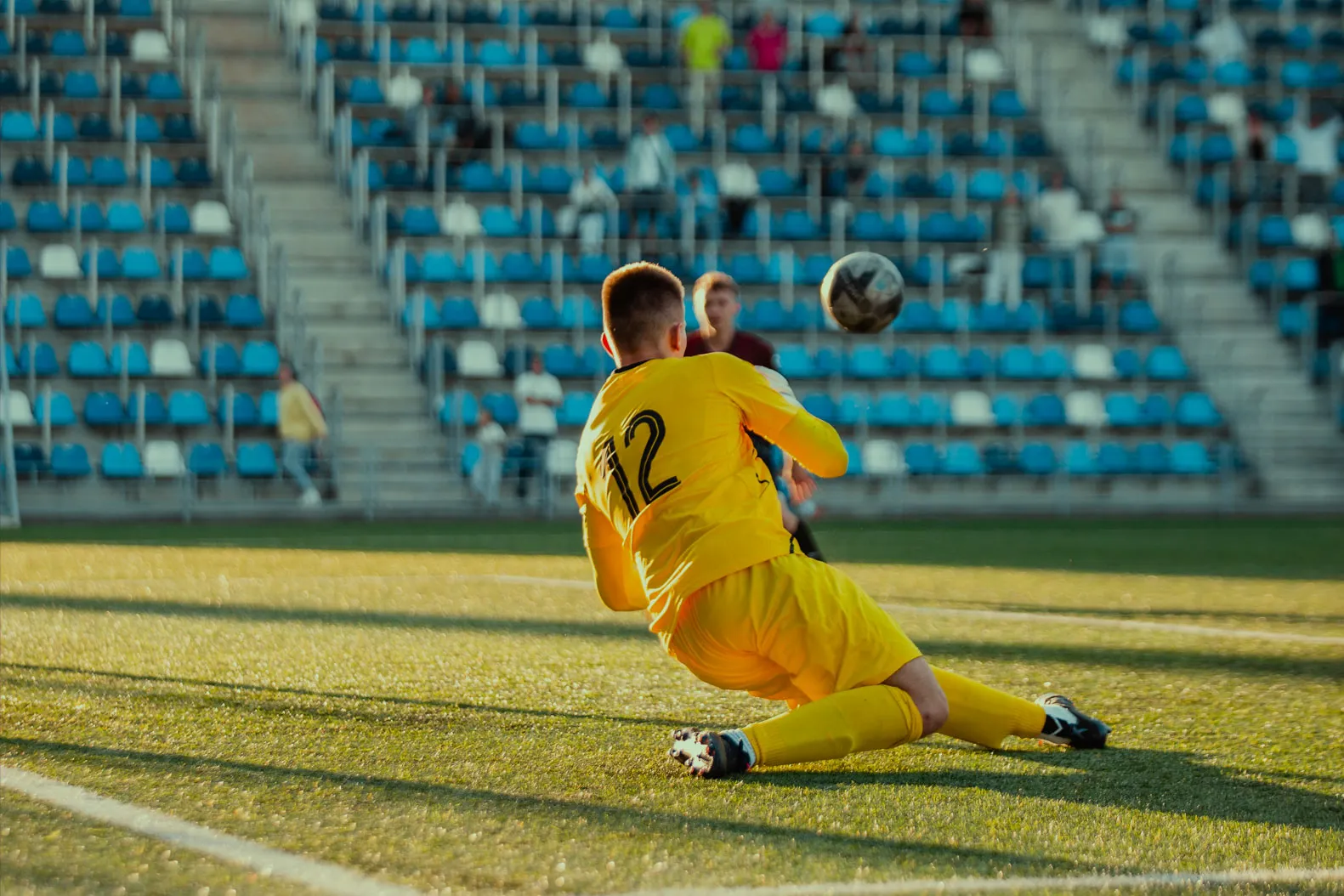
Learning to fall: The essential biomechanics for goalkeepers
Antoine Roex, Keeper In Motion – 8 April 2025
Mastering the art of falling is fundamental for every goalkeeper. With the help of biomechanics, it’s possible to optimize ground movements, prevent injuries, and enhance overall performance. Discover why learning to fall is an integral part of modern goalkeeper training.
The biomechanical importance of falls for goalkeepers
A poorly controlled fall can lead to serious injuries, even on a well-maintained pitch. For goalkeepers, who spend a large part of the game diving, stretching, or landing on the ground, understanding the biomechanical forces at play is essential.
When a keeper dives, their body undergoes significant linear and angular acceleration. The impact with the ground generates a shockwave that the body must absorb. Biomechanics helps break down these movements and identify key levers to reduce the impact without overstressing the joints. The positioning of the shoulders, hips, and hands, as well as the timing of the movement, directly influences both the efficiency and safety of the action.
Learning to fall, then, is also about learning to protect your most important tool: your body.
The role of technique in mastering lateral and forward falls
Diving is an essential part of a goalkeeper’s skill set, but it must be technically mastered to avoid injury. A poorly executed lateral fall can place excessive stress on the shoulder, elbow, or wrist. With a biomechanical approach, the goal is to guide the goalkeeper towards the correct trajectory: initiate rotation from the centre of gravity, keep the eyes aligned with the ball, engage the shoulder and hip together, and absorb the landing with the forearm and side.
For forward falls, often used in one-on-one situations, it’s crucial to adopt a position that distributes the impact across the limbs rather than the chest or head. By automating these reflexes, goalkeepers gain fluidity, quicker reactions, and above all, greater safety.
Injury prevention and performance: two sides of the same coin
A high-performing goalkeeper is one who is physically available. Repeated poor falls cause microtraumas that accumulate and eventually hinder progress. That’s why incorporating fall training into regular practice is not optional, it’s essential.
Working with physiotherapists and movement specialists, biomechanically adapted protocols help strengthen the muscular chains involved in ground contact and improve intersegmental coordination.
The goal is twofold: prevent injuries (sprains, dislocations, tendinitis) and ensure consistent execution of movements, regardless of speed or fatigue.
Falling, then, becomes a controlled, anticipated action, fully integrated into a goalkeeper’s performance strategy.
Learning to fall from a young age: a technical development lever
The earlier a goalkeeper learns how to fall properly, the more natural and safe their movements become. From youth categories, it’s crucial to include exercises such as controlled rolls, landings, and soft falls in technical sessions. This not only protects the body during growth, but also builds confidence in aggressive or extended dives.
Goalkeeper performance coaches should work closely with physical trainers to integrate fall-specific biomechanics into training: ground drills, segmental coordination, functional core work, joint mobility.
This interdisciplinary approach builds essential attributes for high-level play while promoting career longevity.
Conclusion
Learning to fall is a fundamental skill, yet too often overlooked in goalkeeper development. With a rigorous biomechanical approach, every fall can become an efficient, safe, and repeatable movement. By mastering this key aspect of their game, goalkeepers gain performance, confidence, and durability.
Falling should no longer be endured, but embraced as part of a complete performance strategy.
References :
